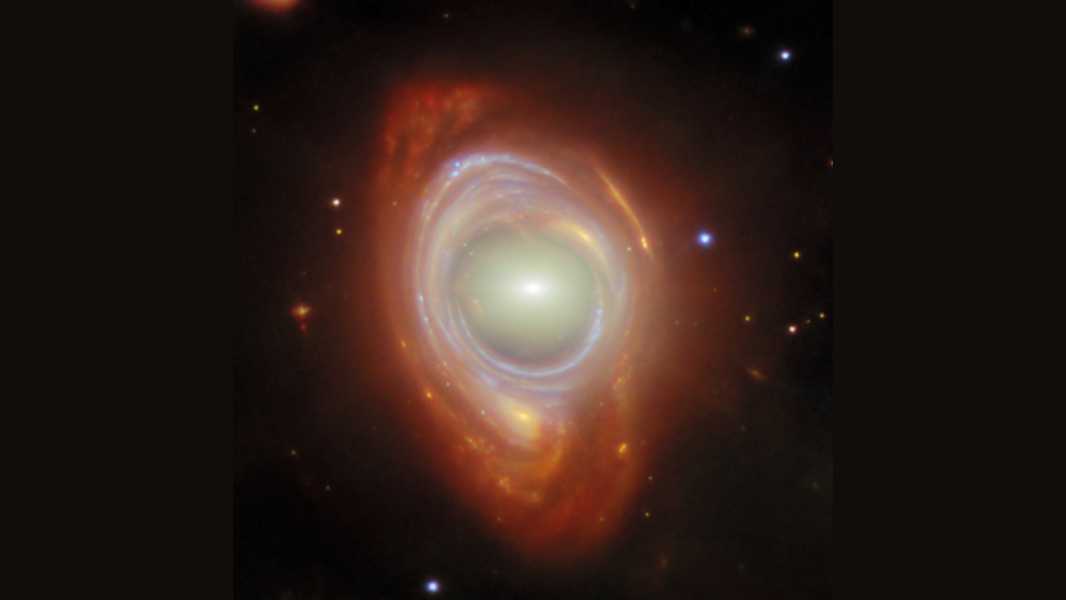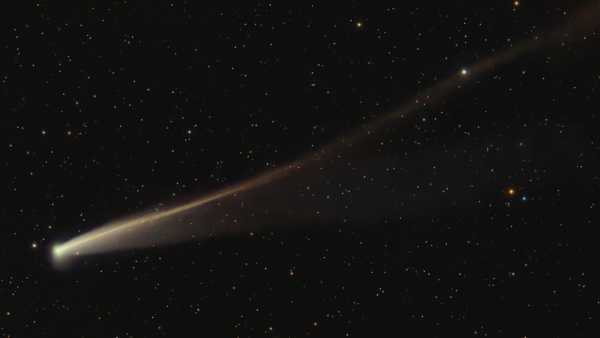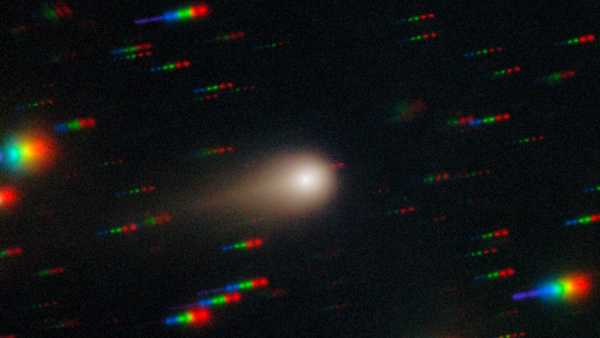
(Image credit: ESA/Webb, NASA & CSA, G. Mahler)
The James Webb Space Telescope (JWST) has captured a stunning image of an unusual astronomical optical illusion.
This “rare cosmic phenomenon,” known as an Einstein ring, appears as a single eye-shaped orb against the cosmic darkness, but is actually a distorted image of two distant galaxies in the constellation Hydra.
There's one galaxy at the bright center of this cosmic show, and the stretched orange and blue light surrounding it is light from another galaxy behind it. The light from the more distant galaxy appears as a ring due to distortions caused by gravitational lensing.
Gravitational lensing occurs when the gravity of a massive object — such as a galaxy or a black hole — bends light from a more distant object. The effect is a direct consequence of Einstein’s theory of relativity, which states that mass warps the fabric of space-time, causing light to travel along curved paths, like a ball rolling down an incline.
“This effect is too small to be noticed at a local level, but sometimes it becomes clearly visible when it comes to bending light on huge astronomical scales,” ESA officials said.
This latest image was released by ESA and the Canadian Space Agency today (March 27) as the March Image of the Month. It was taken using the JWST's Near Infrared Camera instrument and also includes data from the Wide Field Camera 3 and Advanced Camera for Surveys instruments on the Hubble Space Telescope.
Einstein rings like these form when a distant light source, a massive lensing object, and an observer are perfectly aligned, causing the light to appear as a complete ring surrounding the lensing object. As a result, they are extremely rare.
In this case, the foreground elliptical galaxy, part of a galaxy cluster called SMACSJ0028.2-7537, is so massive that it refracts the light of a spiral galaxy far behind it.
“Although its image is distorted as the light passes through the galaxy, individual star clusters and gas structures are clearly visible,” the statement said.
The amazing phenomenon of gravitational lensing also gives astronomers a better understanding of the Universe.
The light emitted by distant galaxies that existed long ago is often too faint to be observed directly from Earth. Strong gravitational lensing magnifies these galaxies, making them appear larger and brighter, allowing astronomers to study some of the first galaxies to form after the Big Bang.
“Objects like these provide an ideal laboratory for studying galaxies that are too faint and distant to be seen by other means,” ESA said in a statement.
What's more, because black holes and dark matter don't emit light, scientists can use gravitational lensing to detect and study them by measuring how they refract and magnify background stars.
James Webb Space Telescope Quiz: How Well Do You Know the World's Most Powerful Telescope? TOPICS James Webb Space Telescope

Jess
Sourse: www.livescience.com





